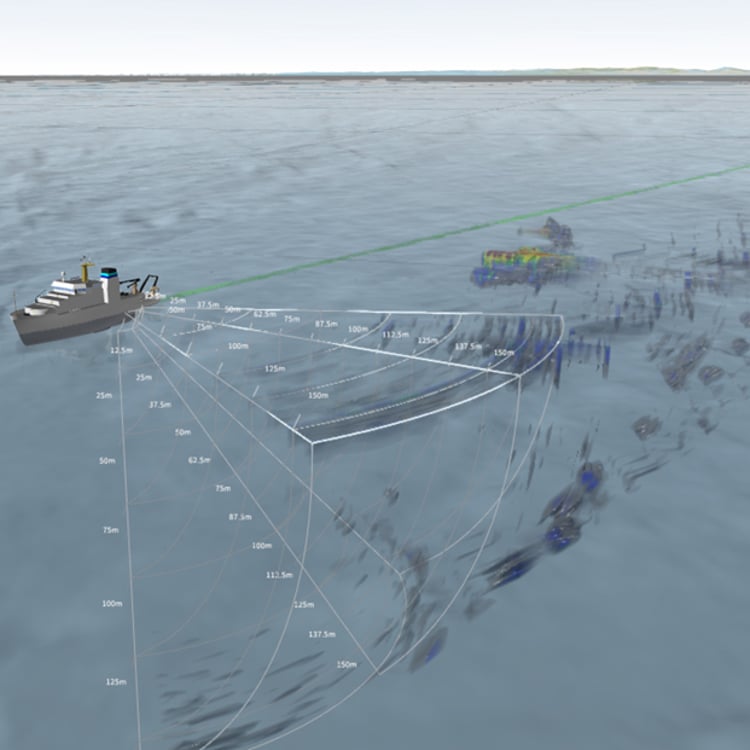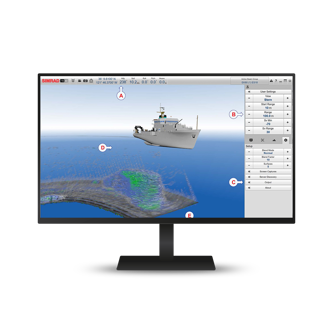
MS70
Scientific multibeam sonar
The MS70 offers scientific-quality quantitative dataquantitative data and high operational flexibility. It is designed for fisheries research applications. The MS70 provides an acoustic matrix of stabilised and calibrated beams for biomass estimation, fish school characterisation and behaviour studies. The transducer is normally mounted on a drop keel, which allows it to look horizontally.

A new dimension
The MS70 provides an acoustic matrix of 500 beams (25 horizontal and 20 vertical). This enables the MS70 to provide instantaneous 3D volume data. Where other systems need multiple pings to provide 3D volume data, the MS70 can use a single ping. This allows the MS70 to provide more accurate data. For example, a school of fish can change its structure several times during the time other systems need to cover the school.
Low sidelobe levels and beam crosstalk
Low sidelobes are key to ensuring the highest water column data quality. They allow for measurement further than the minimum slant range, where data would otherwise be compromised by the bottom echo seen in secondary lobes. They also prevent strong targets in secondary lobes from being mistaken for weak targets in the main lobe.
Calibration
The MS70 system implements a calibration utility as a special built-in function. Each beam configuration of interest can be calibrated using a reference target (sphere) deployed under the ship. Individual beam parameters are adjusted for calibrated target strength and volume backscattering strength measurements interface.
Key features
- 3D instantaneous quantitative measurements
- 500 beams in a 20 by 25 matrix configuration
- Operating frequencies 75-112 kHz
- Low sidelobe levels and beam crosstalk
- Calibration software included
Current software version
We recommend that you always keep your system updated with the latest software version.
All applicable information related to this software release can be found in the Software release note.
Current software version is
24.5
Stay updated!
Sign up to be notified when we update our Ocean Science products.
Product range
Get in touch!
In addition to our many offices around the world, our global dealership network enables distribution to more than 100 countries to meet customer needs at any location. Find your local dealership or Kongsberg Discovery office here.
We offer comprehensive after-sales assistance
-
24/7 Technical support
Our Technical Support team is readily available to provide global 24/7 support and can respond to resolve any issues at any time, wherever you are located in the world.
-
Training
We can provide detailed training on the use of our products to ensure your crew is equipped with the necessary operational competence to minimise technical risk and maximise return on your asset investment.

